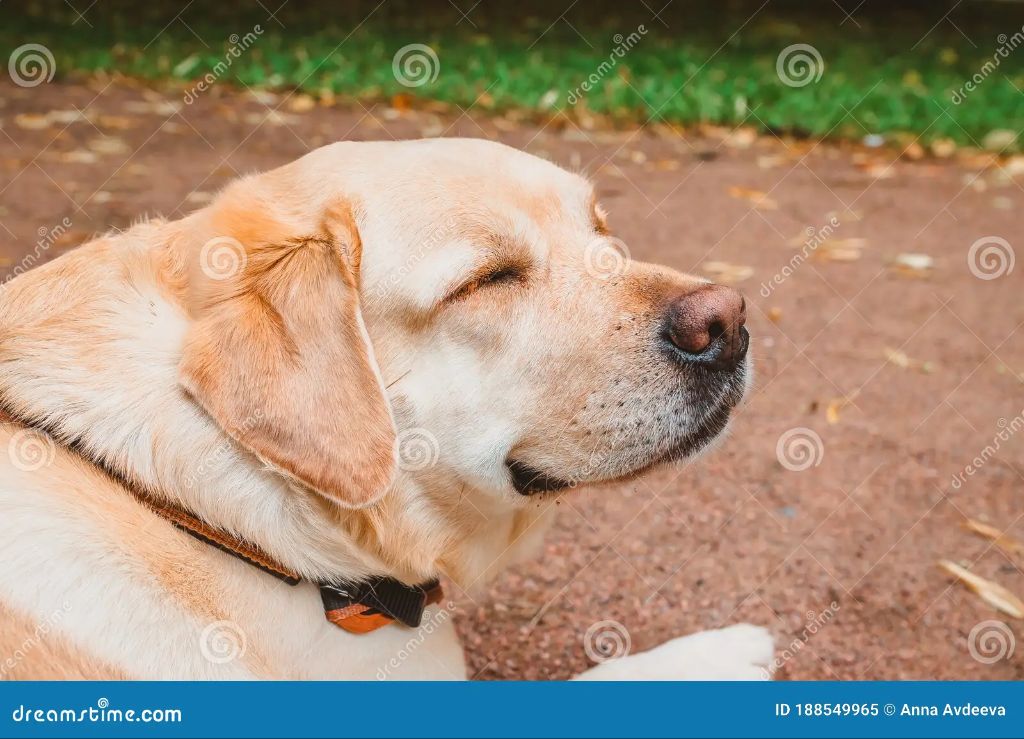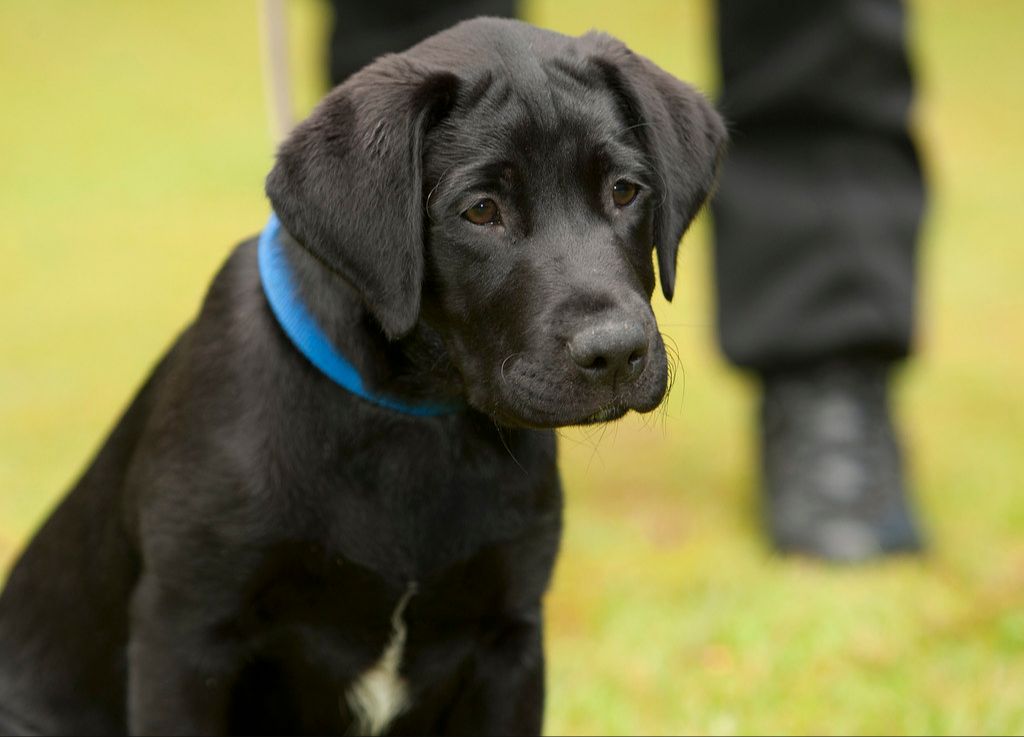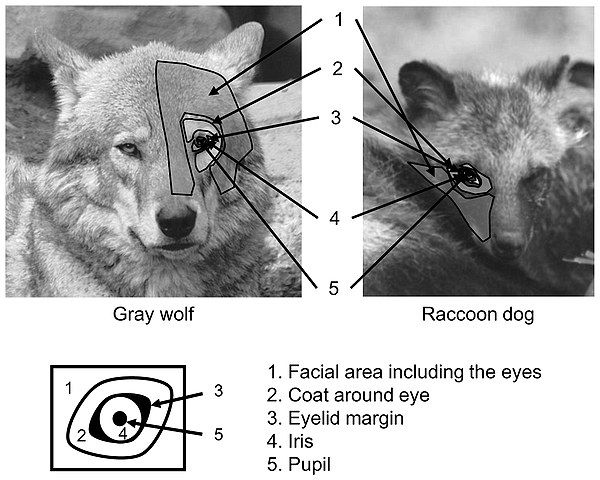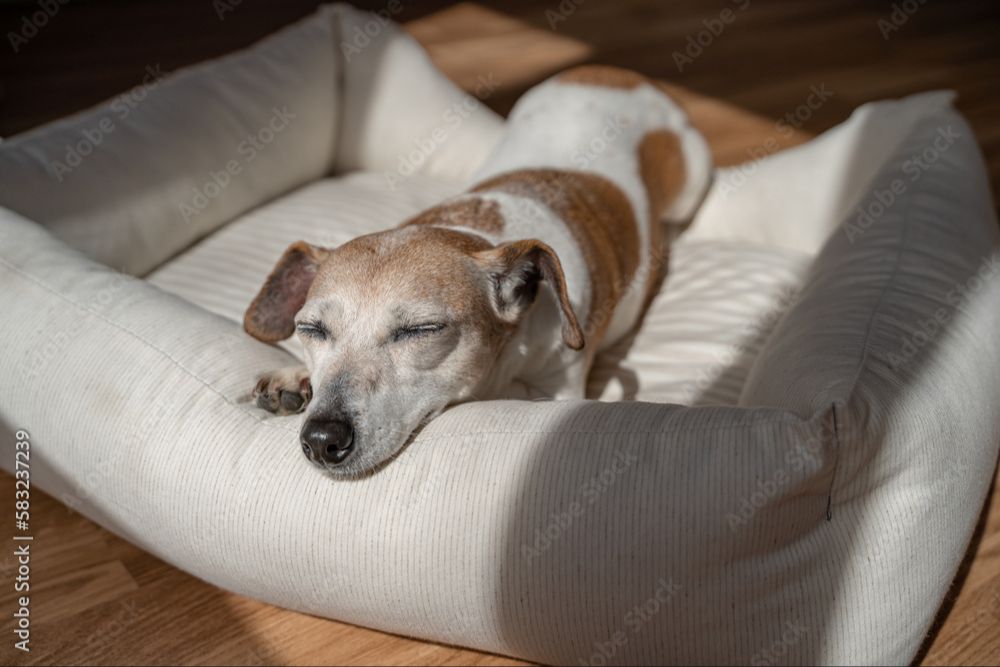Common Reasons Dogs Close Their Eyes
Dogs often close their eyes when they are feeling relaxed and content. This is a natural response that indicates the dog feels safe and comfortable in their environment. According to Quora, when a dog slowly closes their eyes around their owner, it’s a sign of trust and relaxation. The gentle closing of the eyes can be accompanied by a relaxed body posture as the dog begins to rest.
Closing the eyes can also be a signal of concentration or focus. When working on a training activity or presented with a toy or treat to solve, some dogs will intently stare and then close their eyes while focusing on the task at hand. This helps minimize other visual stimuli so the dog can concentrate.
Dogs also use eye closing as a means of communication. Slow blinking or closing the eyes for a brief moment can communicate affection and bond between a dog and human. Conversely, rapidly closing and opening the eyes can signal frustration or annoyance at something.
Sometimes frequent eye closing or squinting can be a symptom of an eye infection or other health issue, especially if accompanied by discharge or redness. Foreign bodies, dry eye, or corneal ulcers are examples. In these cases, it’s important to have the dog’s eyes examined by a vet.
Signs of Relaxation

When a dog is relaxed, you may notice it closing its eyes or having droopy eyelids. This is one of the tell-tale signs of a relaxed pooch. Other body language cues that indicate relaxation include:
Slow, relaxed breathing: https://www.traincanine.com/how-to-tell-if-your-dog-is-relaxed-body-language-and-signs/ When a dog feels relaxed and comfortable, its breathing will become deeper and more even. The breaths are slow and steady rather than quick and shallow.
Loose, floppy body: https://www.aspcapro.org/resource/7-tips-canine-body-language A relaxed dog will have a loose, wiggly body rather than stiff or tense muscles. Their head may rest on the ground and the hind legs will be folded or splayed out.
Closed eyes: Closing the eyes or having a soft half-lidded gaze are signs that a dog feels safe enough in its environment to mentally check out. The eyes are not scanning for potential threats.
Lips covering teeth: When relaxed, a dog’s mouth will be closed or slightly open rather than pulled back to expose teeth. The ears will also be in a neutral position.
Concentration Cues
Some common signs of concentration in dogs include staring intently, ears pricked up, and eyes narrowed or closed. When a dog is very focused on something, they may stare at it without blinking and point their ears toward the object of interest. This helps them tune in and concentrate using their powerful sense of hearing and vision.
Dogs may narrow their eyes or even close them completely when zoning in on a sound or smell. A study on dogs’ body language during learning found that narrowed eyes and ears pricked forward were associated with better performance on training tasks (https://www.ncbi.nlm.nih.gov/pmc/articles/PMC4494300/). Eyes closing for brief moments signals that the dog is concentrating intently and blocking out other stimuli.

Owners can watch for these visual cues to understand when their dog is concentrating. It often happens when encountering new sights and sounds or being presented with food or toys. Knowing when your dog is intently focused can help with timing rewards during training. It also provides insight into what captures your dog’s interest in the environment.
Communication Signals
Dogs will often slowly close their eyes or squint as a way to avoid direct eye contact, which can be seen as confrontational in the canine world. Maintaining eye contact is a dominance behavior for dogs, so breaking eye contact by closing their eyes shows submission and a lack of threat (Source). When a dog blinks or squints at a human or another dog, it signals peaceful intentions and an avoidance of conflict.

Closing the eyes can also demonstrate trust and comfort when dogs do this with their owners or family members. A dog that feels completely safe will often slowly blink or close his eyes during petting or snuggling. It indicates the dog is at ease and content with the situation (Source). The action releases oxytocin in both the dog and human, strengthening their bond.
Potential Health Issues
There are several potential health issues that can cause dogs to close their eyes or show signs of eye discomfort. Some common health problems include:
Eye infections
Bacterial and viral eye infections like conjunctivitis are common in dogs. Symptoms include redness, swelling, discharge, and excessive blinking or squinting (Doncastervet).
Eye injury or trauma
Injuries like scratches to the cornea can be very painful and cause dogs to squeeze their eyes shut. Chemical burns, foreign objects lodged in the eye, and blunt force trauma can also harm the eyes (ASPCA Pet Insurance).
Vision problems
Issues like cataracts, glaucoma, and progressive retinal atrophy affect vision and may cause dogs to close their eyes. Vision loss can make dogs uncomfortable as their surroundings become less clear (PetMD).
When to See the Vet
If your dog is showing any signs of a potential eye infection, it’s a good idea to schedule a visit with your veterinarian. Some common symptoms that signal an eye infection requiring veterinary care include:
- Redness around the eyes
- Swelling of the eyelids or tissue surrounding the eyes
- Excessive eye discharge or tearing
- Frequent blinking, squinting, or pawing at the eyes
- Cloudiness in the corneas
- Blue-tinged coloring in the whites of the eyes
According to the AKC, redness and swelling are two key signs of inflammation that often accompany an eye infection or injury [1]. Cloudy, bluish eyes can also signal problems like corneal ulcers or eye trauma that requires prompt veterinary attention [2]. Your vet can pinpoint the underlying cause and prescribe medication to relieve discomfort and treat any infection.
Caring for Eye Health
There are several ways to help keep your dog’s eyes healthy and free of irritation.
One important step is to clean your dog’s eyes regularly, such as once a day. Use a soft, damp cotton ball or cloth to gently wipe away any discharge or debris from the corners of the eyes, wiping outward toward the ears. Avoid touching the eyeball directly. This helps remove dirt and bacteria that can cause infections or irritation (AKC Canine Health Foundation).
Providing your dog with a high-quality diet rich in vitamins and antioxidants can also promote good eye health. Key nutrients for eye health include vitamins A, C, and E, along with omega-3 fatty acids. Consider an eye health supplement if recommended by your veterinarian (Medivet).
You can also take steps to avoid exposing your dog’s eyes to irritants. For example, keep shampoos and soaps away from their eyes when bathing, be careful when grooming around the eyes, and avoid letting your dog stick their head out the window when driving, as debris and wind can damage their eyes (Under the Weather).
Making Dogs Comfortable
Dogs feel calmer and more relaxed when they have comfortable spaces to rest in the home. Providing soft, cozy beds and mats allows your dog to fully settle in and relax their body. Look for beds with high walls that provide a sense of security and orthopedic foam for joint support. Place beds in quiet areas of the home away from high traffic. Allow access to their safe space when visitors arrive or noisy activities occur.

Gentle petting and massages are excellent ways to soothe your dog when they feel on edge. Use slow strokes along their body, avoiding sensitive areas. Focus on massage around major muscle groups like the neck, shoulders and hind legs. Light tickles under the chin or base of the tail can release feel-good hormones. Always gauge reactions and stop if your dog seems uncomfortable. The calming effects of human touch can lower heart rate, breathing rate and anxiety.
Creating a soothing environment helps dogs unwind more easily. Playing soft music, using pheromone diffusers and limiting external stimuli can promote relaxation. Maintain comfortable lighting and temperatures. Minimize loud sounds or boisterous activities when your dog needs to settle. Offer favorite toys or chews to occupy them during calm time. A predictable, low-key environment allows comfort and security.
Training Eye Contact Cues
One way to strengthen engagement and focus with your dog is by training them on eye contact cues using positive reinforcement. This can be a fun activity for both owner and dog!
Start by getting your dog’s attention and having them sit. As soon as they make eye contact with you, mark the behavior with a clicker or verbal marker like “yes.” Then immediately give your dog a treat. Repeat this process until your dog starts reliably making eye contact when asked to sit and focus. Just be sure to reward them every time they make eye contact in the beginning.
You can then add in a verbal cue like “watch me” or “look” right before your dog makes eye contact. Say the cue once before rewarding with a treat. Over many repetitions, your dog will learn that “watch me” means to make direct eye contact and hold it until receiving a reward.
Treats are crucial for reinforcing this wanted behavior and building your dog’s engagement. Praise can also be given after treating to let your dog know they did a great job.
Training sessions should be kept short, fun and rewarding. Gradually ask for longer eye contact over time by waiting a beat before treating. Practice in different environments as well, starting with low distraction areas.
With continued positive reinforcement training, you can teach your dog to maintain eye contact even when excited or distracted. This creates clear communication between you and your pet. Just remember to be patient – eye contact training takes time but pays off!
Source: https://karenpryoracademy.com/teach-your-dog-how-to-give-eye-contact/
When to Be Concerned
While periodic eye closing can be normal for dogs, excessive squinting or keeping eyes shut should not be ignored. If it occurs frequently or is combined with other symptoms like discharge, swelling, redness, or scratching, veterinary attention is warranted (https://wagwalking.com/symptom/why-is-my-dog-keeping-one-eye-closed).
Dogs that suddenly start closing their eyes more than usual or keeping them shut for long periods could be exhibiting pain or discomfort. Significant behavior changes like lethargy, loss of appetite, or irritability along with abnormal eye closing merits examination by a vet (https://www.justanswer.com/pet-dog/5f22g-dog-half-closing-eyes-always-lately-hes-tired.html).
If a dog is rubbing, pawing at, or scratching their eyes frequently, an eye problem likely exists. Foreign objects, injuries, infections, or dryness can cause eye irritation. Allowing these issues to persist can lead to complications, so veterinary assistance should be promptly sought.